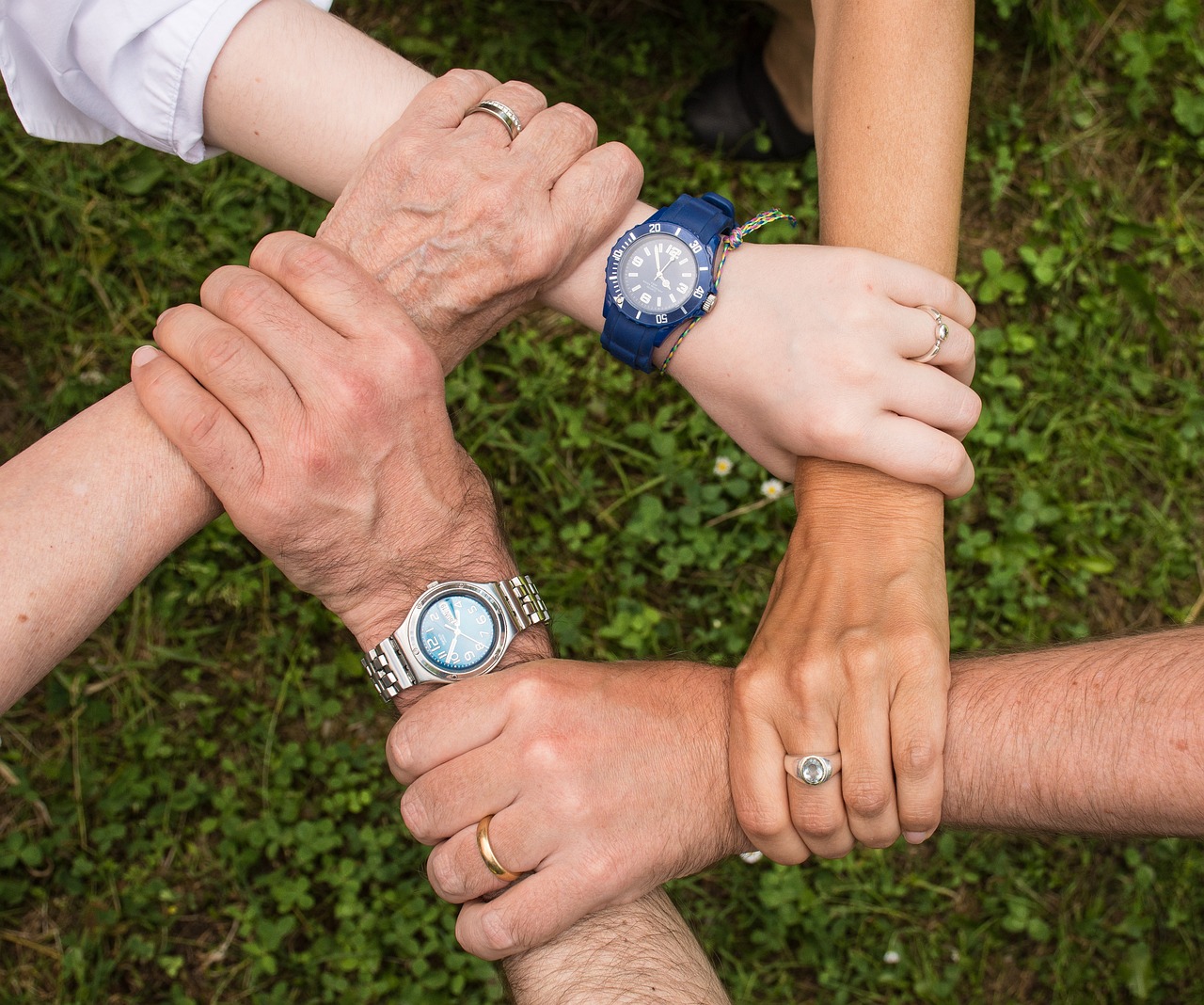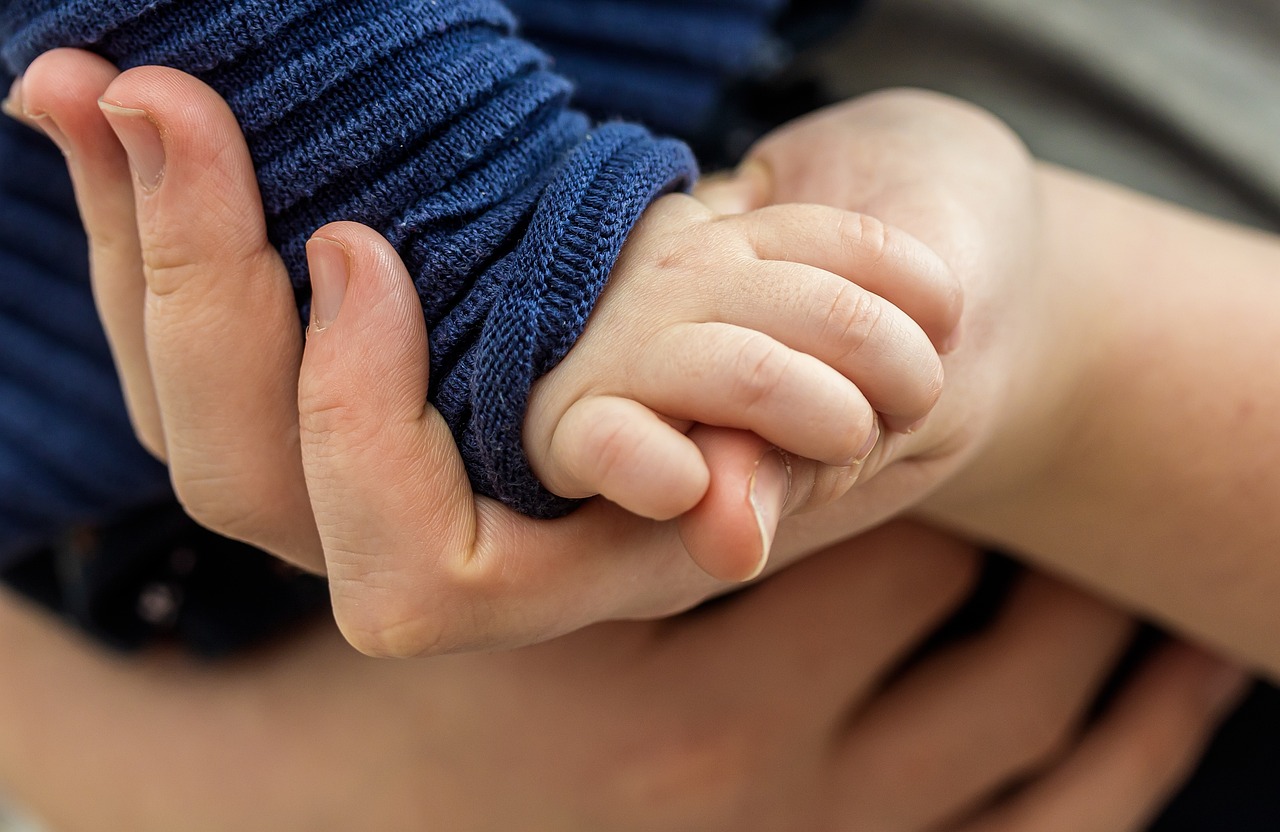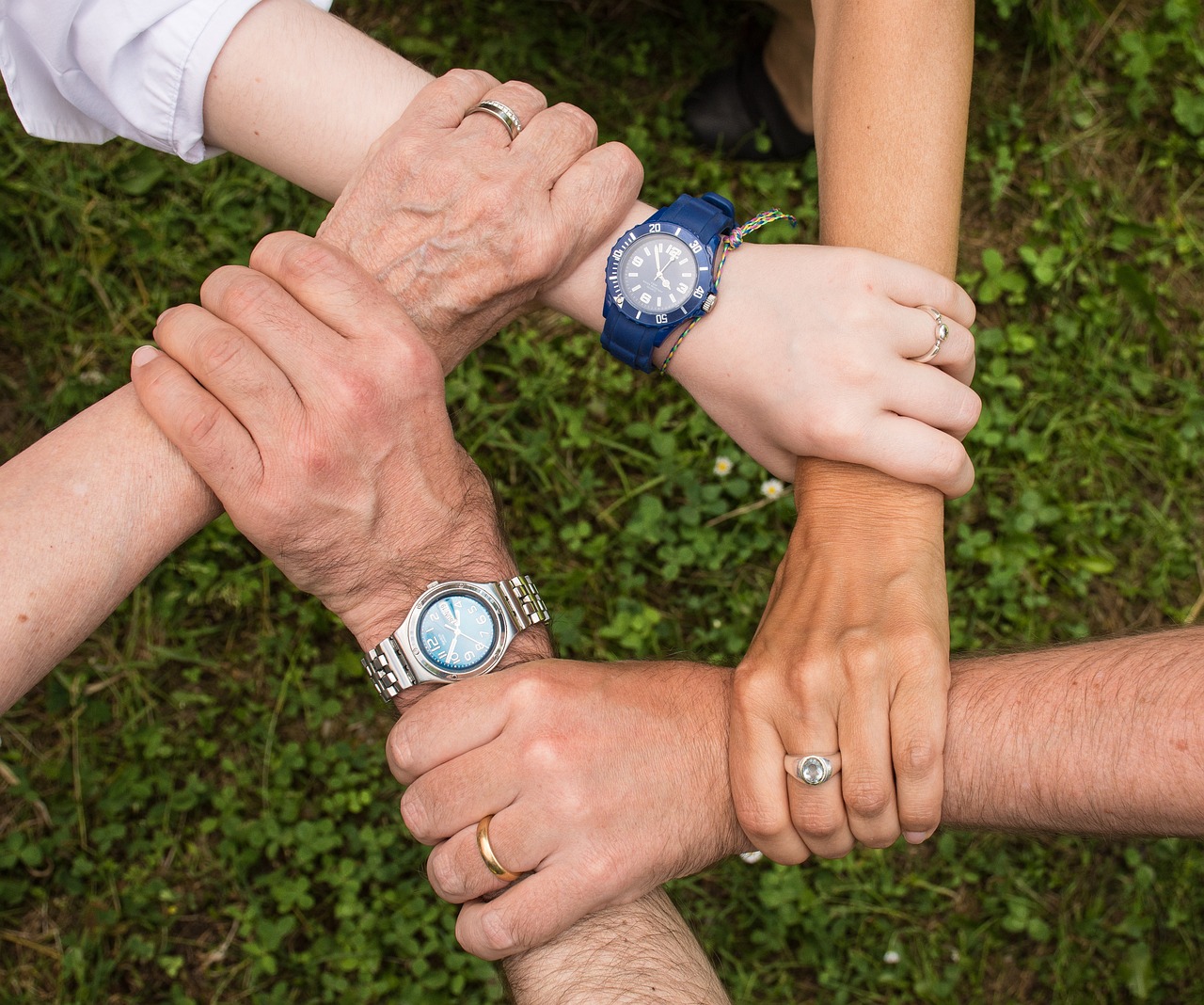How to Support Your Local Community Post-Disaster
Disasters can strike unexpectedly, leaving communities in turmoil. Whether it's a natural calamity like a hurricane, an earthquake, or even a man-made crisis, the aftermath can be overwhelming. However, one of the most powerful ways to help your local community is by offering support during these challenging times. But how can you make a real difference? What steps should you take to ensure that your efforts are effective and meaningful? This article explores effective ways to assist your local community in the aftermath of a disaster, highlighting various strategies, resources, and community involvement opportunities to foster recovery and resilience.
Assessing the specific needs of your community is crucial after a disaster. It's not just about jumping in with donations or volunteering; it’s about understanding what the community truly requires to rebuild and recover. One effective method to identify these needs is through surveys. You can create simple questionnaires that target specific demographics within your community to gather insights on their immediate needs. Additionally, organizing local meetings can facilitate open discussions where residents can voice their concerns and suggestions. Collaborating with community leaders can also provide valuable perspectives on the most pressing issues. Remember, a community that communicates is a community that heals.
Volunteering is a powerful way to support recovery efforts. If you’re looking to roll up your sleeves and get involved, there are numerous organizations and initiatives that are actively seeking volunteers. Not only does volunteering provide immediate assistance, but it also fosters a sense of community and solidarity among residents. From helping at local shelters to participating in cleanup efforts, every bit of effort counts. Imagine the difference you can make by simply dedicating a few hours of your time to those who need it most!
Local shelters and food banks play a vital role in disaster recovery. These organizations often become the lifeline for many families who have lost everything. They rely heavily on volunteers to help sort donations, prepare meals, and provide support to those in need. If you’re wondering how you can help, consider reaching out to these organizations to see what types of assistance they require. Whether it’s your time or resources, your contribution can significantly impact those who are struggling to get back on their feet.
Organizing donation drives can significantly aid recovery efforts. If you have a knack for organizing events, this might be the perfect opportunity for you! Start by identifying what items are most needed in your community—this often includes essentials like clothing, toiletries, and non-perishable food items. Once you have a list, promote your drive through social media, local newspapers, and community boards. The more people who know about it, the more successful it will be. Remember, every little bit helps!
Fundraising events can mobilize community resources effectively. Think about hosting a bake sale, charity run, or even a local concert to raise funds for recovery efforts. Engaging local businesses for sponsorships can also amplify your efforts. Not only does this provide financial support, but it also fosters a sense of unity within the community. Planning these events requires some effort, but the rewards—both for you and the community—are immeasurable.
Educating the community about disaster preparedness and response is essential. Hosting workshops and training programs can empower residents to better handle future emergencies. Imagine a community where every resident knows how to respond effectively to a disaster! Such initiatives can range from first aid training to emergency planning sessions. This not only equips individuals with the necessary skills but also builds a more resilient community.
Local businesses can be instrumental in recovery efforts. They often have the resources, both financial and logistical, to make a significant impact. Collaborating with them can lead to innovative solutions for community recovery. For example, local restaurants might provide meals for volunteers, while hardware stores could donate supplies for rebuilding efforts. Building these partnerships is not just beneficial; it's essential for a holistic recovery approach.
Corporate sponsorships can enhance recovery initiatives significantly. Local businesses can contribute through financial support, in-kind donations, and employee volunteer programs. By aligning their corporate social responsibility goals with community needs, businesses can create a win-win situation that benefits everyone involved. It's about creating a culture of giving back and showing that businesses care about the communities they operate in.
Encouraging the purchase of local products aids economic recovery. Supporting local businesses is more than just a feel-good action; it's a vital part of rebuilding the local economy. When consumers choose to buy local, they help keep money within the community, which can lead to job creation and economic stability. So, next time you’re shopping, think about how your choices can impact your community positively.
- How can I find volunteer opportunities in my area? Check local community boards, social media groups, or websites dedicated to disaster relief.
- What items are typically needed after a disaster? Essentials like food, water, clothing, toiletries, and first aid supplies are often in high demand.
- How can I organize a donation drive? Start by identifying needs, promote your drive widely, and coordinate with local organizations for distribution.
- Can businesses contribute to recovery efforts? Absolutely! Local businesses can provide financial support, in-kind donations, and even volunteer their time.

Understanding Community Needs
This article explores effective ways to assist your local community in the aftermath of a disaster, highlighting various strategies, resources, and community involvement opportunities to foster recovery and resilience.
After a disaster strikes, the immediate aftermath can feel overwhelming. It’s like standing in the middle of a storm, unsure of where to turn. The first step in supporting your community is to understand its unique needs. This understanding is crucial because not every disaster affects every community in the same way. Some areas might need food and shelter, while others may require emotional support or rebuilding assistance.
So, how do we figure out what’s needed? One effective method is to conduct surveys. These can be simple questionnaires distributed online or in person, asking residents about their immediate needs and concerns. By collecting this data, you can paint a clearer picture of what the community is facing. Additionally, organizing local meetings can serve as a platform for open dialogue. By inviting community members to share their thoughts, you create a space where everyone feels heard and valued.
Collaboration with community leaders is another powerful tool. These leaders often have a pulse on the community and can provide insights that might not be immediately obvious. By working together, you can identify and prioritize the most pressing needs. For example, if a local school has been damaged, it might be essential to focus on educational resources and support for children first. This targeted approach ensures that your efforts are not just well-intentioned but also effective.
Furthermore, it’s essential to recognize that the needs of a community can evolve over time. What may be critical in the first few days post-disaster might shift as recovery progresses. Thus, maintaining an ongoing dialogue through community forums or social media can help keep everyone informed and engaged. This adaptability is key to fostering resilience and ensuring that recovery efforts are sustainable.
In summary, understanding community needs is not a one-time task but a continuous process that requires active listening, collaboration, and adaptability. It’s about being present and responsive to the changing landscape of your community’s recovery journey.
Volunteering is a powerful way to support recovery efforts. Here, we outline various organizations and initiatives seeking volunteers and how you can get involved to make a tangible difference.
Shelters and food banks play a vital role in disaster recovery. This subsection highlights how these organizations operate and the types of assistance they require from volunteers and donors.
Organizing donation drives can significantly aid recovery efforts. We discuss how to effectively set up these drives, what items are most needed, and how to promote them within your community.
Fundraising events can mobilize community resources. This section covers ideas for successful events, including planning tips and how to engage local businesses for support.
Educating the community about disaster preparedness and response is essential. Here, we explore workshops and training programs that can empower residents to better handle future emergencies.
Local businesses can be instrumental in recovery efforts. This section discusses ways to collaborate with them to provide resources, services, and financial support for the community.
Corporate sponsorships can enhance recovery initiatives. We examine how local businesses can contribute through financial support, in-kind donations, and employee volunteer programs.
Encouraging the purchase of local products aids economic recovery. This subsection emphasizes the importance of supporting local businesses and how consumers can make a positive impact through their spending choices.
Q: How can I assess the needs of my community after a disaster?
A: You can assess needs by conducting surveys, hosting local meetings, and collaborating with community leaders to gather information and insights.
Q: What types of volunteer opportunities are available?
A: There are various opportunities available, including volunteering at local shelters, food banks, and participating in community education programs.
Q: How can I organize a donation drive?
A: Start by identifying the most needed items, set a clear timeframe, promote the drive through social media and local networks, and coordinate with local organizations for distribution.
Q: Why is it important to partner with local businesses?
A: Local businesses can offer valuable resources, financial support, and community engagement, which are all vital for effective recovery efforts.

Volunteer Opportunities
Volunteering is not just an act of kindness; it’s a powerful way to support your community when it needs you the most. After a disaster strikes, the impact can be overwhelming, but your willingness to lend a hand can make a significant difference. There are numerous organizations and initiatives that actively seek volunteers to help with recovery efforts. Getting involved can be as simple as offering your time or skills, and every little bit counts. So, where do you start? Let’s dive into some fantastic avenues where your efforts can truly shine.
One of the most immediate ways to help is by reaching out to local shelters and food banks. These organizations are often on the front lines, providing essential services to those affected by the disaster. They rely heavily on volunteers to distribute food, provide shelter, and offer emotional support. If you’re wondering how you can help, consider the following roles:
- Food Preparation and Distribution: Many food banks need volunteers to help prepare and package meals for those in need.
- Shelter Assistance: Shelters often require help with setting up cots, distributing supplies, and providing companionship to those staying there.
- Emotional Support: Sometimes, just being there to listen can make a world of difference for someone who has lost everything.
In addition to shelters and food banks, organizing donation drives can be a game-changer for recovery efforts. These drives can gather much-needed supplies such as clothing, hygiene products, and non-perishable food items. Setting up a donation drive involves planning, promotion, and coordination. Here are some tips to ensure your drive is successful:
| Step | Description |
|---|---|
| 1. Identify Needs | Connect with local shelters or organizations to find out what items are most urgently needed. |
| 2. Choose a Location | Pick a central location where community members can easily drop off donations. |
| 3. Promote Your Drive | Use social media, community boards, and local businesses to spread the word. |
| 4. Volunteer to Sort | Gather a team to help sort and deliver the collected items to the organizations in need. |
Another impactful way to support recovery is by hosting fundraising events. These events not only raise money but also foster a sense of community and resilience. Whether it’s a bake sale, a charity run, or a local concert, there are countless ways to engage your community. Here are some planning tips:
- Set Clear Goals: Determine how much money you aim to raise and what specific needs the funds will address.
- Engage Local Businesses: Reach out to local shops and restaurants for sponsorships or donations. They might provide food, prizes, or even a venue for your event.
- Promote Widely: Use social media and local media outlets to get the word out. The more people know, the more successful your event will be!
By volunteering your time and skills, you not only contribute to recovery efforts but also inspire others to join in. Remember, every action, no matter how small, contributes to rebuilding your community. So roll up your sleeves, gather your friends, and start making a difference today!

Local Shelters and Food Banks
In the aftermath of a disaster, local shelters and food banks become lifelines for those affected. They provide not just essential resources like food and shelter, but also a sense of community and support during incredibly challenging times. These organizations work tirelessly to ensure that no one goes hungry or lacks a safe place to stay. But how can you help? Understanding the operations of these shelters and food banks is the first step toward making a meaningful contribution.
Local shelters often serve as temporary housing for individuals and families displaced by disasters. They may offer beds, meals, and even emotional support through counseling services. By volunteering your time at these shelters, you can directly impact the lives of those who are struggling. Whether it’s helping to prepare meals, organizing sleeping arrangements, or simply offering a listening ear, every bit of effort counts.
Food banks, on the other hand, focus on collecting and distributing food to those in need. They rely heavily on donations from individuals, businesses, and organizations to stock their shelves. If you’re considering how to contribute, think about the following:
- Volunteer Your Time: Food banks often need help sorting and packaging food items. This is a great way to meet people in your community while making a tangible difference.
- Donate Food: Non-perishable items such as canned goods, pasta, and rice are always in demand. Check with your local food bank for their specific needs.
- Monetary Contributions: Sometimes, cash donations are more beneficial as they allow food banks to purchase exactly what they need. Every dollar counts!
Additionally, many local shelters and food banks are in constant need of supplies beyond just food. Items like personal hygiene products, blankets, and clothing can greatly enhance the quality of life for those in need. Organizing a community drive to collect these items can be a fantastic way to rally your neighbors and make a significant impact.
To further illustrate the importance of these organizations, consider the following table that highlights the types of support they typically require:
| Type of Support | Description |
|---|---|
| Food Donations | Canned goods, dry food items, and fresh produce. |
| Volunteer Work | Assisting with meal preparation, distribution, and shelter management. |
| Financial Contributions | Monetary donations to help purchase necessary supplies. |
| Clothing and Hygiene Products | New or gently used clothing, toiletries, and personal care items. |
By getting involved with local shelters and food banks, you not only provide essential services to those in need but also foster a spirit of unity and resilience within your community. Remember, every small effort can lead to significant change, and your involvement could inspire others to lend a helping hand as well.
Q: How can I find local shelters and food banks in my area?
A: You can search online for local organizations, check community bulletin boards, or contact local government offices for resources.
Q: What items are most needed at food banks?
A: Generally, non-perishable food items, personal hygiene products, and baby supplies are in high demand. Always check with your local food bank for their specific needs.
Q: Can I volunteer if I have limited time?
A: Absolutely! Many organizations welcome volunteers for short shifts or specific projects. Every bit of help is appreciated!

Donation Drives
Organizing is one of the most impactful ways to support your local community in the aftermath of a disaster. These drives not only provide essential resources but also foster a sense of unity and collaboration among community members. To get started, it's important to identify the specific needs of your community. What does your neighborhood require the most? Is it food, clothing, hygiene products, or perhaps something else entirely? Engaging with local shelters, food banks, and community leaders can give you valuable insights into what items are most urgently needed.
Once you have a clear understanding of the needs, the next step is to set up your donation drive effectively. Choose a suitable location that is easily accessible for community members. This could be a local school, community center, or even a church hall. Make sure to promote the drive through various channels such as social media, local newspapers, and community bulletin boards. The more people know about it, the more support you’ll gather. Consider using eye-catching posters and flyers that clearly outline what items are needed and how people can contribute.
When it comes to the items you collect, it's crucial to focus on quality and relevance. Here’s a quick rundown of some of the most needed items in donation drives:
- Non-perishable food items: Canned goods, pasta, rice, and cereals.
- Clothing: Warm clothing, especially for children and infants.
- Hygiene products: Soap, toothpaste, and sanitary supplies.
- First aid supplies: Bandages, antiseptics, and over-the-counter medications.
Additionally, consider creating a donation schedule to streamline the process. This helps in managing the flow of donations and ensures that everything is organized. You can set specific times for drop-offs and even enlist volunteers to help sort and distribute the items collected. Remember, the goal is to make it as easy as possible for people to contribute while ensuring that the items reach those who need them most.
Finally, after the drive concludes, don’t forget to thank your community for their generosity. A simple thank-you note or a shout-out on social media can go a long way in showing appreciation and encouraging future participation in similar initiatives. By fostering a spirit of giving and cooperation, you not only aid in recovery efforts but also strengthen the bonds within your community.
Q: How can I organize a donation drive?
A: Start by identifying the needs of your community, choose a location, promote the drive, and set a schedule for donations. Engage volunteers to help manage the process.
Q: What items are most needed during a disaster?
A: Commonly needed items include non-perishable food, clothing, hygiene products, and first aid supplies. Always check with local organizations for specific needs.
Q: How can I promote my donation drive?
A: Utilize social media, local newspapers, community bulletin boards, and create eye-catching flyers to spread the word about your drive.
Q: Can I partner with local businesses for my donation drive?
A: Absolutely! Local businesses can provide financial support, in-kind donations, or even host the drive at their location, enhancing community involvement.

Fundraising Events
Fundraising events are not just about raising money; they are a way to bring the community together, create awareness, and foster a spirit of collaboration in the wake of a disaster. Think of them as a beacon of hope, illuminating the path toward recovery. Organizing a successful fundraising event requires careful planning and a dash of creativity. So, how do you get started? First off, consider the type of event that would resonate with your community. From charity runs to bake sales, the possibilities are endless. The key is to choose something that aligns with the interests and passions of your local residents.
Once you have a theme in mind, it’s time to map out the logistics. This includes selecting a date, venue, and setting a realistic fundraising goal. Engaging local businesses can play a crucial role here. They can provide sponsorships, donate items for auctions, or even offer their venues for free. Imagine hosting a community concert at a local park, where every ticket sold goes directly to disaster recovery efforts. Not only does this generate funds, but it also creates a sense of unity and purpose among attendees.
Promotion is another critical aspect of a successful fundraising event. Utilize social media platforms, community bulletin boards, and local newspapers to spread the word. Create eye-catching flyers and share engaging posts that highlight the cause and the impact of the funds raised. You can even set up a countdown to the event to build anticipation. Remember, the more people know about your event, the more likely they are to participate and contribute.
During the event, consider incorporating activities that engage attendees further. This could include:
- Live music or performances
- Raffles with exciting prizes
- Interactive booths where people can learn more about the recovery efforts
These activities not only make the event enjoyable but also serve to educate attendees about the ongoing needs within the community. After the event, don’t forget to thank everyone who participated, whether they donated, volunteered, or simply showed up. Sharing the results of the event, such as how much was raised and how it will be used, helps build trust and encourages future participation.
In summary, fundraising events can be a powerful tool in the recovery process post-disaster. They create a platform for community engagement, raise essential funds, and foster a sense of togetherness. So, roll up your sleeves and get planning; your community needs you now more than ever!
Q: How can I promote my fundraising event effectively?
A: Use social media, local newspapers, and community bulletin boards. Create engaging flyers and consider online event platforms to reach a broader audience.
Q: What types of fundraising events are most successful?
A: Events that resonate with the community, such as charity runs, bake sales, or community concerts, tend to be the most successful. Tailor your event to the interests of your locals.
Q: How can local businesses get involved in fundraising efforts?
A: Local businesses can sponsor events, donate items for auctions, or provide venues for free. Engaging them in your planning can significantly boost your event's success.
Q: What should I do with the funds raised from the event?
A: Be transparent about how the funds will be used. Share this information with participants and the community to build trust and encourage future support.

Community Education and Training
In the wake of a disaster, one of the most critical steps towards recovery is empowering the community through education and training. It’s not just about rebuilding physical structures; it’s about rebuilding the very fabric of society by ensuring that residents are informed and prepared for future emergencies. Imagine a community where every individual knows exactly what to do when disaster strikes. This sense of readiness can make all the difference between chaos and effective response.
To achieve this, organizing workshops and training programs is essential. These sessions can cover a variety of topics, including first aid, emergency response techniques, and disaster preparedness planning. For instance, a basic first aid workshop can equip residents with the skills to assist their neighbors in the immediate aftermath of a disaster, while emergency response training can prepare volunteers to act swiftly and efficiently when help is needed most.
Moreover, it’s important to tailor these educational programs to the specific needs of the community. By conducting surveys or holding community meetings, organizers can gather insights on what residents feel they need to learn. This not only ensures that the training is relevant but also fosters a sense of ownership among community members. When people feel involved in the planning process, they are more likely to participate actively.
In addition to hands-on training, creating informational resources is vital. Consider developing brochures or online guides that outline essential preparedness steps, emergency contact numbers, and local resources available in times of crisis. These materials can be distributed during community events or made available at local businesses and public spaces. The more accessible the information, the better prepared the community will be.
As part of this educational initiative, it's beneficial to partner with local organizations and experts. For example, local fire departments or health organizations can offer their expertise in training sessions, bringing credibility and valuable knowledge to the table. Collaborating with these entities not only enhances the quality of the education provided but also strengthens community ties.
To ensure the longevity of these educational efforts, establishing a community training committee can be a game-changer. This committee can oversee the planning and execution of ongoing training programs, ensuring that residents have continual access to education and resources. By fostering a culture of preparedness, communities can significantly enhance their resilience against future disasters.
In summary, community education and training are pivotal in fostering a sense of security and preparedness. By engaging residents, collaborating with local experts, and continuously providing relevant information, communities can not only recover from disasters but also emerge stronger and more united than ever.
1. Why is community education important after a disaster?
Community education is crucial as it equips residents with the knowledge and skills needed to respond effectively in emergencies, reducing panic and improving overall safety.
2. How can I get involved in community training programs?
You can participate by volunteering to help organize workshops, offering your expertise if you have relevant skills, or simply attending and spreading the word about these programs.
3. What topics should be covered in disaster preparedness training?
Essential topics include first aid, emergency response procedures, evacuation plans, and how to create a family emergency plan.
4. How can I find out about upcoming training sessions in my area?
Check local community centers, social media groups, or municipal websites for announcements about upcoming educational events and workshops.

Partnering with Local Businesses
When disaster strikes, the strength of a community often lies in its ability to come together and support one another. One of the most impactful ways to foster this unity is by . These businesses are not just economic engines; they are integral parts of the community fabric, and their involvement can significantly enhance recovery efforts. Think about it: local businesses have established relationships, resources, and a deep understanding of the community’s needs. By collaborating with them, you can create a powerful alliance that benefits everyone.
First and foremost, local businesses can provide financial support that is crucial during recovery. Many businesses have the means to contribute through direct donations or by sponsoring community initiatives. For instance, a local restaurant might host a fundraising dinner where a portion of the proceeds goes to disaster relief efforts. This not only raises funds but also brings the community together for a common cause. Additionally, businesses can offer their services at discounted rates or even for free, helping to alleviate some of the financial burdens faced by those affected by the disaster.
Moreover, businesses can play a vital role in mobilizing resources. They often have access to supplies that can aid recovery, such as food, clothing, and hygiene products. For example, a local grocery store may be willing to donate food to shelters or food banks, while a hardware store might provide tools and materials for rebuilding efforts. By establishing partnerships, communities can create a network of support that ensures essential resources are readily available to those in need.
In addition to financial and material support, local businesses can also offer their expertise. Many businesses, especially those in construction, healthcare, or logistics, have valuable knowledge and skills that can be utilized in recovery efforts. For instance, a local contractor could lead workshops on safe rebuilding practices or offer advice on how to navigate insurance claims. This kind of knowledge-sharing can empower community members and help them make informed decisions during a challenging time.
To facilitate these partnerships, it’s essential to create a structured approach. Consider organizing a community business forum where local business owners can come together to discuss how they can contribute to recovery efforts. This could be a simple meeting or a more formal event. The key is to foster open communication and collaboration. By understanding each other's strengths and resources, businesses can coordinate their efforts effectively.
Here’s a quick overview of how to effectively partner with local businesses:
| Action | Description |
|---|---|
| Identify Needs | Assess what resources and support the community requires post-disaster. |
| Engage Local Businesses | Reach out to businesses to discuss how they can contribute. |
| Organize Events | Plan fundraising events or donation drives that involve local businesses. |
| Promote Collaboration | Encourage businesses to work together on recovery initiatives. |
Finally, it’s important to recognize that supporting local businesses during recovery is a two-way street. When you encourage community members to shop locally, you’re not just helping businesses survive; you’re also ensuring that the money stays within the community, fostering economic resilience. So, consider making a conscious effort to buy from local vendors, whether it’s grabbing a coffee from the neighborhood café or purchasing supplies from a family-owned hardware store. Every little bit helps!
In conclusion, partnering with local businesses can create a robust support system that enhances recovery efforts after a disaster. By leveraging their resources, expertise, and community ties, businesses can help rebuild not just structures, but also the spirit of the community. Together, we can emerge from adversity stronger than ever.
Q: How can I find local businesses willing to help in recovery efforts?
A: Start by reaching out to your local chamber of commerce or business associations. They can connect you with businesses interested in supporting community initiatives.
Q: What types of support can local businesses provide?
A: Local businesses can offer financial donations, in-kind contributions (like food or supplies), volunteer services, and expertise in various fields.
Q: How can I encourage my community to support local businesses during recovery?
A: Promote local shopping through social media campaigns, organize community events that showcase local businesses, and highlight their contributions to recovery efforts.

Corporate Sponsorships
Corporate sponsorships can play a pivotal role in enhancing recovery initiatives following a disaster. When local businesses step up to support their communities, they not only contribute financially but also foster a sense of unity and resilience. Imagine a local bakery donating a portion of their sales to help rebuild a community center or a tech firm providing free services to streamline recovery efforts. These actions not only help in immediate recovery but also strengthen community ties.
One of the most effective ways for businesses to engage in corporate sponsorships is through financial contributions. These funds can be directed toward specific recovery projects, such as rebuilding homes or providing essential services. Alternatively, businesses can offer in-kind donations, which include goods or services that directly benefit recovery efforts. For example, a construction company might donate materials for rebuilding homes, while a local grocery store could supply food for shelters. By leveraging their resources, companies can significantly impact the speed and effectiveness of recovery efforts.
Additionally, many companies have programs in place to encourage their employees to volunteer. This not only boosts employee morale but also allows businesses to contribute to their communities actively. When employees volunteer, they bring their skills and expertise to the table, which can be invaluable during recovery efforts. For instance, a marketing firm could help promote fundraising events, while a law firm might provide legal assistance to those navigating insurance claims.
Moreover, corporate sponsorships can also take the form of partnerships with local non-profits. By collaborating with established organizations that are already involved in recovery efforts, businesses can ensure that their contributions are directed where they are most needed. This synergy can lead to more efficient use of resources and a more significant impact on the community. In fact, many non-profits actively seek corporate partners to help amplify their efforts. Here’s a quick look at how corporate sponsorships can be structured:
| Type of Sponsorship | Description | Examples |
|---|---|---|
| Financial Contributions | Direct monetary support for recovery initiatives. | Donations to rebuild homes or fund community programs. |
| In-Kind Donations | Goods or services provided to aid recovery efforts. | Donated building materials or food supplies. |
| Employee Volunteer Programs | Encouraging employees to volunteer in community recovery efforts. | Organizing teams to help with cleanup or rebuilding. |
| Partnerships with Non-Profits | Collaborating with local organizations to enhance recovery efforts. | Working with shelters or food banks to provide resources. |
In conclusion, corporate sponsorships are not just about financial transactions; they are about building relationships and fostering a spirit of community. When businesses invest in their local areas, they create a ripple effect that benefits everyone involved. It’s a win-win situation: companies gain goodwill and community support, while residents receive the help they need to recover and rebuild. So, the next time you see a local business stepping up after a disaster, remember that their contributions are more than just charity—they are a lifeline for the community.
- What types of businesses can participate in corporate sponsorships?
Any local business, regardless of size, can engage in corporate sponsorships. From small shops to large corporations, every contribution counts. - How can businesses measure the impact of their sponsorships?
Businesses can track their contributions through feedback from community organizations, surveys, and reports on recovery progress. - Are there tax benefits for businesses that donate?
Yes, businesses may qualify for tax deductions on charitable contributions, depending on local laws and regulations. - How can a business get started with corporate sponsorships?
Businesses can begin by reaching out to local non-profits or community leaders to discuss potential partnerships and identify needs.

Promoting Local Products
After a disaster, one of the most impactful ways to foster recovery within your community is by . Supporting local businesses not only helps to revive the economy but also strengthens community ties. Imagine walking into a store and seeing familiar faces; it’s a comforting reminder that your community is resilient and coming back together. By choosing to buy local, you’re not just purchasing a product; you’re investing in your neighbors, your friends, and the very fabric of your community.
So, how can you effectively promote local products? First, it’s essential to raise awareness about the benefits of buying local. Many residents may not realize how their purchasing decisions can lead to a more robust local economy. When you buy from local businesses, you keep money circulating within your community, which can lead to job creation and improved local services. Plus, local products often have a lower environmental impact due to reduced transportation costs. It’s a win-win situation!
To kickstart this initiative, consider organizing events that showcase local products. For instance, a local market day can be an excellent platform for farmers, artisans, and small business owners to display their goods. This not only provides them with an opportunity to sell their products but also invites the community to come together, fostering a sense of unity and purpose. You might even include live entertainment or food trucks to make the event more appealing and engaging. Don't forget to promote these events through social media, local newspapers, and community boards to maximize attendance.
Additionally, creating a “Shop Local” campaign can significantly boost awareness. This could involve designing eye-catching posters and flyers to distribute around town, or even a digital campaign using social media platforms. Encourage community members to share their favorite local products online, using a specific hashtag to create a sense of community pride. You could also collaborate with local influencers or bloggers who can help spread the word and highlight the unique offerings available in your area.
Moreover, consider establishing a loyalty program in partnership with local businesses. This program could reward customers for shopping at participating stores, encouraging repeat business and fostering long-term relationships between consumers and businesses. For example, customers could collect points for every purchase, which they can later redeem for discounts or special offers. This not only incentivizes shopping locally but also makes the experience more enjoyable for everyone involved.
Finally, it’s vital to keep the conversation going. Regularly update the community about the progress of local businesses and share success stories. Perhaps a local bakery that was struggling after the disaster is now thriving thanks to community support. Highlighting these stories can inspire others to get involved and remind everyone of the collective strength that comes from supporting one another. Remember, every purchase counts, and together, we can build a stronger, more resilient community.
- Why is it important to support local products after a disaster? Supporting local products helps to revive the local economy, create jobs, and strengthen community ties.
- How can I find local products in my area? You can visit local markets, check community boards, or follow local businesses on social media for updates on their offerings.
- What are some effective ways to promote local products? Organize local market days, create “Shop Local” campaigns, establish loyalty programs, and share success stories through community channels.
Frequently Asked Questions
- What are the most effective ways to assess community needs after a disaster?
Assessing community needs post-disaster involves engaging with local residents through surveys, hosting community meetings, and collaborating with community leaders. This direct approach helps identify specific challenges and resources required for recovery.
- How can I find volunteer opportunities in my area?
You can discover volunteer opportunities by checking local non-profit organizations, visiting community centers, or searching online platforms that list volunteer needs. Many organizations post their requirements on social media, so following them can keep you updated.
- What items are most needed for donation drives?
Donation drives often require essential items such as non-perishable food, clothing, hygiene products, and blankets. It's best to check with local shelters or organizations for their specific needs, as these can vary based on the disaster's impact.
- How can I organize a successful fundraising event?
To organize a successful fundraising event, start by defining your goals, choosing a theme, and selecting a suitable venue. Engage local businesses for sponsorships, promote the event through social media and community boards, and make it fun to encourage participation!
- What types of community education programs should I consider?
Consider workshops that cover disaster preparedness, first aid training, and emergency response strategies. These programs empower residents to act effectively during emergencies, fostering a more resilient community.
- How can local businesses contribute to recovery efforts?
Local businesses can support recovery by offering financial contributions, in-kind donations, or employee volunteer programs. Partnering with community organizations can amplify their impact and strengthen community ties.
- Why is it important to promote local products after a disaster?
Promoting local products helps stimulate the local economy, which is crucial for recovery. Supporting local businesses ensures that money stays within the community, helping to create jobs and rebuild the economy.



















